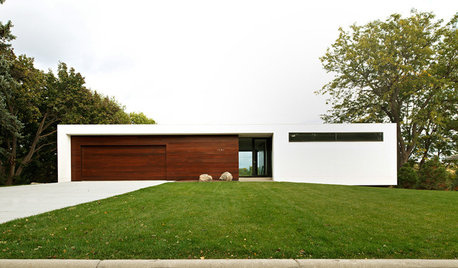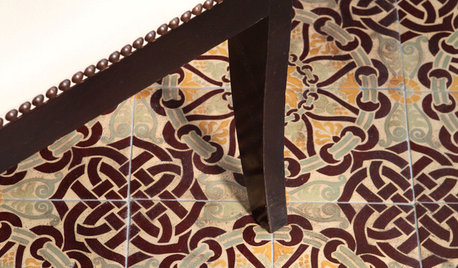What makes an authentic Torii?
Herb
18 years ago
Related Stories

ARCHITECTUREWhy Authenticity in Architecture Matters
Is your home's exterior making a promise it doesn't keep? Learn why integrity and consistency are essential for architectural success
Full Story
DECORATING GUIDESHow to Get Authentic French Style in Your Home
Move over Shabby Chic and French Provincial. These myths and realities reveal the real look of French decor
Full Story
ACCESSORIESTypography Makes Itself at Home
Letter-based home accessories and art still have many hearts beating. Tell us: Will vintage signage stick around?
Full Story
REMODELING GUIDESJust Passing Through: How to Make Passageways an Experience
Create a real transition between realms and interest along the way with archways, recesses, shelves and more
Full Story
DIY PROJECTSMake a Wild, Organic Floral Table Garland for a Holiday Dinner Party
Flowers, fruit and foliage in reds, pinks, golds and greens form a colorful runner for a special winter celebration
Full Story
REMODELING GUIDESOld is New: Cement Tile Makes a Comeback
Get Ideas for Using Colorful Moorish-Inspired Tile at Home
Full Story
FEEL-GOOD HOMEThe Question That Can Make You Love Your Home More
Change your relationship with your house for the better by focusing on the answer to something designers often ask
Full Story

MODERN ARCHITECTUREArchitecture: How Details Can Make All the Difference
To know what makes a home design a hit — or near miss — you've got to understand this key ingredient
Full Story
MOST POPULAR8 Ranch House Renovations Make More Room for Living
See how homeowners have updated vintage homes to preserve their charm and make them function beautifully in today’s world
Full Story





Niwashisan
HerbOriginal Author
Related Professionals
Holly Springs Landscape Architects & Landscape Designers · Saint Matthews Landscape Architects & Landscape Designers · Canton Landscape Contractors · Darien Landscape Contractors · Fort Myers Landscape Contractors · Hurricane Landscape Contractors · Kerman Landscape Contractors · Lemay Landscape Contractors · New Baltimore Landscape Contractors · Pueblo West Landscape Contractors · Fort Mill Decks, Patios & Outdoor Enclosures · Lake Morton-Berrydale Decks, Patios & Outdoor Enclosures · Lincolnton Decks, Patios & Outdoor Enclosures · New York City Decks, Patios & Outdoor Enclosures · Oak Ridge Decks, Patios & Outdoor EnclosuresHerbOriginal Author
Archer55
HerbOriginal Author
keithnotrichard
HerbOriginal Author
HerbOriginal Author
Niwashisan
keithnotrichard
Niwashisan
jeepster
Niwashisan
keithnotrichard
Niwashisan
inkognito
Archer55
edzard
jeepster
edzard
inkognito
jeepster
edzard
inkognito
jeepster
HerbOriginal Author
edzard
HerbOriginal Author
edzard
HerbOriginal Author
plantfreak